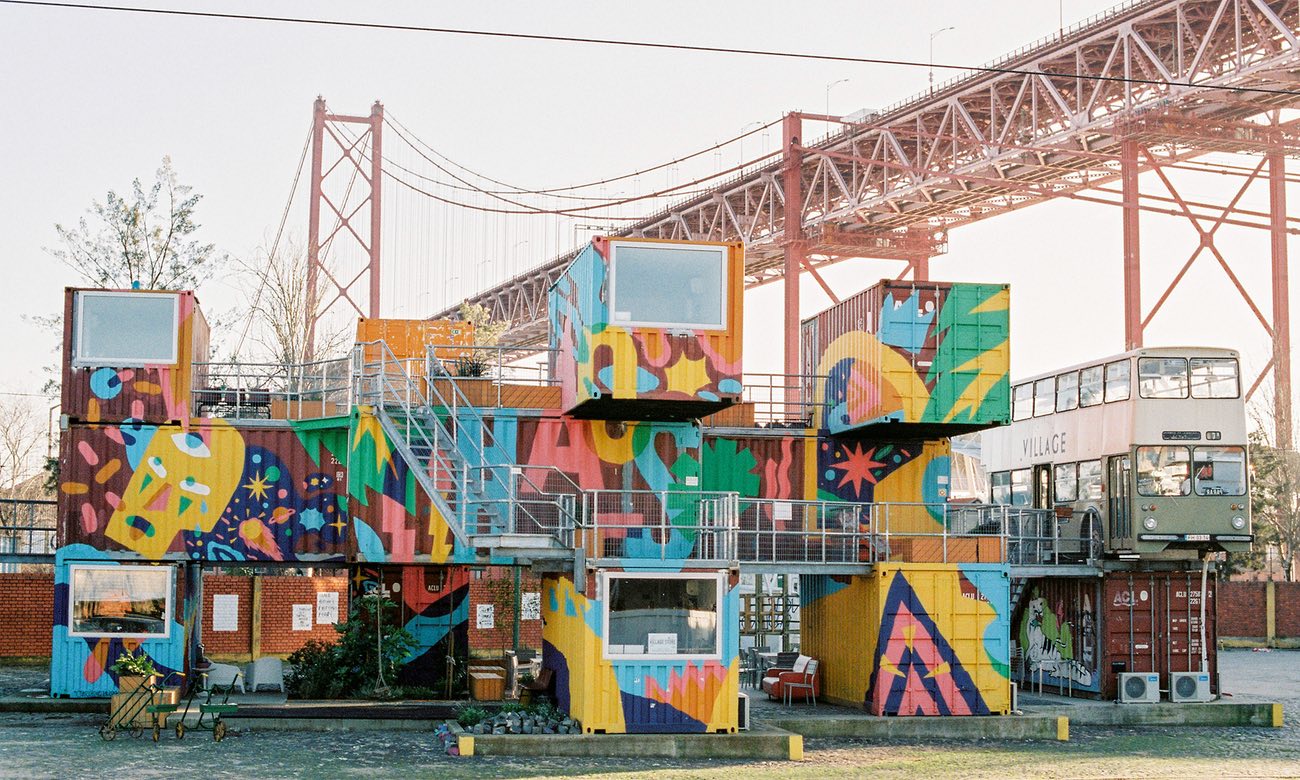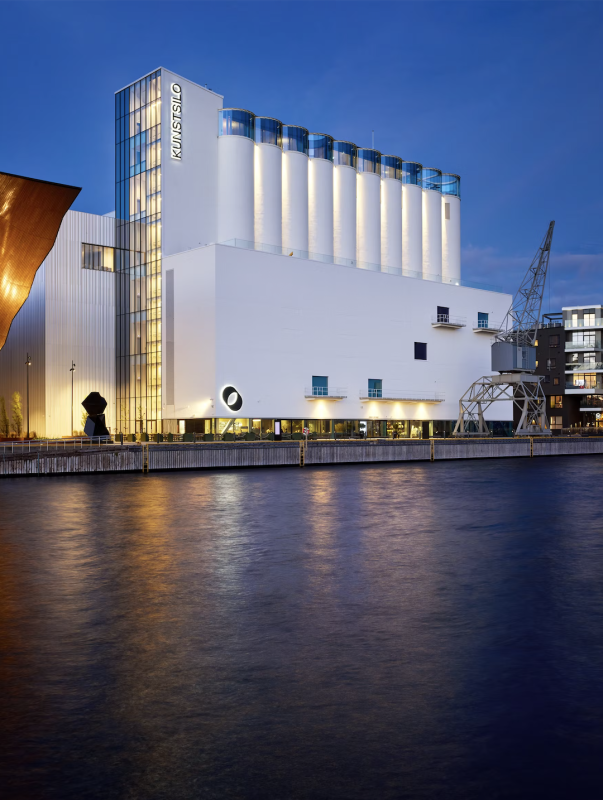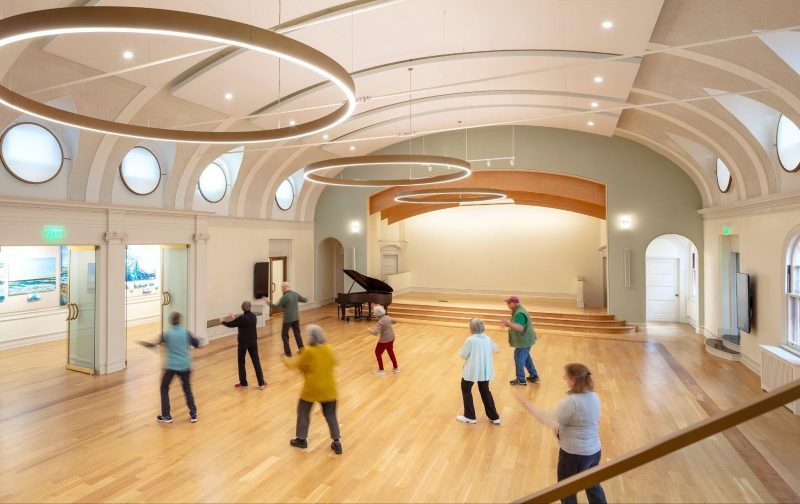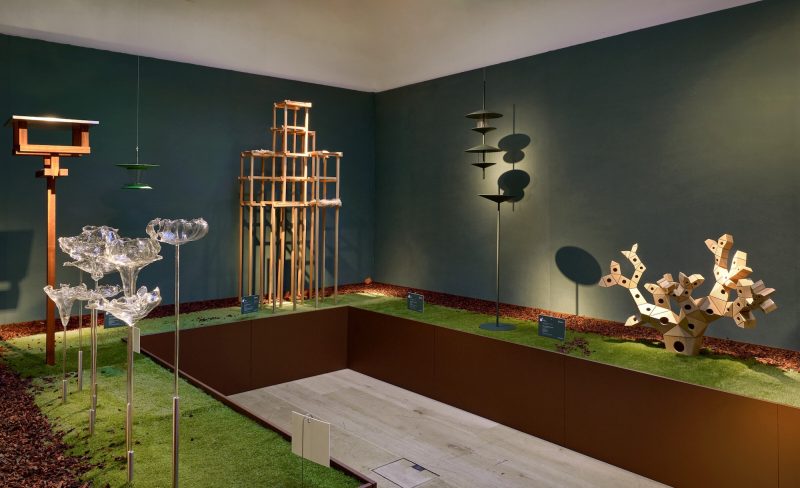
Village Underground – part creative community, part arts venue – occupies a dramatic site next to the city’s suspension bridge. Photograph: Village Undergound
In Lisbon people keep telling me about the surfing. It’s great. The beaches are 20 minutes from the beautiful, historic and lively centre of Lisbon. You get the best of everything: Bondi meets old Europe. I hear this from Patrick, a Kentuckian whose digital marketing business was formerly based in Costa Rica and at another time in Bali; from Matthieu, a French life coach; and from Tariq, a British property specialist. I hear it from the Yorkshire-raised, London-based Rohan Silva, whom the British press likes to describe as a “tech scenester” or “techpreneur”, and from João Vasconcelos, Portugal’s suave secretary of state for industry.
Until recently, most of the news coming out of Portugal was of what Vasconcelos calls “the worst crisis in 100 years”, with stories of professionals sleeping in their cars because they’d been evicted from their homes. On my last visit, for the architecture triennale in 2013, an event full of ingenious low-cost ideas for reviving empty spaces and struggling businesses, Lisbon felt like a city on its knees. Now, according to one of the 2013 triennale’s organisers, Mariana Pestana, “there’s a psychological improvement. People are starting to dream again, they’re starting to consume again.” Economic change is “no longer something that happens to us. There is some control.” There are also early outbreaks of the complaints that come with urban success, rising property prices and loss of character.
Lisbon is becoming an outstanding example of what might be called Monocle urbanism, after the magazine that combines trendspotting and lifestyle advice with social and political commentary, and which recently devoted many pages to the Portuguese capital. For the sophisticated nomads that Silva calls “the global creative class”, Lisbon’s attractions are powerful. According to Vasconcelos, “the big cosmopolitan cities of the world are more like each other”, such that central London and central Lisbon are closer to each other than London is to the Brexit-voting regions of Britain. (Theorists of the liberal metropolitan elite will take note.) For the first time since the 1940s, when Lisbon was a refuge from the war, says Pestana, the city is “really cosmopolitan”.
Take Patrick Tigue of Downtown Ecommerce, the American who was formerly in Costa Rica. He has clients all over the world, from the US to Australia, some of whom he doesn’t meet for years, if ever. “Our business started to grow, and we had a problem scaling up, so we opened up a map and wrote down a bunch of cities.” They had business criteria – access to English speakers, low cost of living, low wages, a convenient time zone – and personal preferences: surfing, good weather. “Berlin and Barcelona were good from the workforce perspective, but the lifestyle in Lisbon did it.”
“In Lisbon,” he goes on, “the people are incredible. There is always some type of music, style, arts going on. The food is incredible, the architecture… It’s a big little city. The real estate – you feel it’s coming up. It was quite a gamble. I came here last year for a vacation but it turned into an extended stay and then into moving here permanently. I’d like to stay here for the long term, to have kids here. I am that convinced.”
Manifestations of the new Lisbon include reincarnations of locations first created to serve tech businesses in London. One is Village Underground, “part creative community, part arts venue”, which aims to combine affordable workspaces with art, music and performance. In London it’s distinguished by four recycled Tube carriages perched in the air. In Lisbon it consists of a pile of shipping containers and repurposed double-decker buses, on a dramatic location next to the city’s suspension bridge.

Another is Second Home, a shared workspace created by Silva and his business partner, Sam Aldenton, an enclave where industrious tech businesses can get in touch with their inner lotus-eater. In Lisbon, as in London, the Spanish architects Selgas Cano have been commissioned to design an internal garden of delights, with abundant foliage, subtly clashing colours and playful details, only less frenetic in the recently-opened Portuguese version: the main space is a single greenhouse-like room, with the territories of different companies defined by plants.
A programme of cultural, social and sensual events – a wine-tasting, a literary salon, an introduction to hydroponics – is designed to engage and delight the members. A cafe painted deep blue serves both them and any of the general public who want to venture in.
Second Home opens off Time Out Market, in the historic Mercado da Ribeira, that describes itself as “an original concept that creates food and cultural experiences based on editorial curation”. The idea is to translate into physical space the knowledge of the journalists of the eponymous listings magazine, “to house the best restaurants and artists… the best of the city under one roof”. It opened in 2014, now attracts 2 million visitors a year, and has inspired another Time Out Market, planned for London later this year.
Lisbon also has Vhils, a young street artist described to me as a cross between Banksy and Damien Hirst, already embraced by government-backed art projects and corporations like the electricity giant EDP. (Which, it must be said, seems to go against the bottom-up ethos that is supposed to be the point of street art.)
These high-concept and somewhat Anglophile initiatives are laid upon a city of old-fashioned dignity, of arcades and ocean breezes, of the yellow, timber-lined streetcars that get into the tourist pictures, of classical facades maintaining their equilibrium over steep slopes, of delectable cake shops and family-owned seafood restaurants.
Lisbon is also a city that responded to economic crisis with resourcefulness and imagination. Behind an anonymous and battered door, for example, can be found a Cozinha Popular (people’s kitchen) founded by a food writer called Adriana Freire. It is a serene space in the district of Mouraria. where people who had fallen on hard times make exceptional meals for the enjoyment and benefit of the local community. Out of it has spun Muita Fruta, a project to “transform Lisbon into a big farm”. It started with mapping the city’s existing fruit trees, helping their owners to get the best out of them, harvesting their fruit and making jam. The plan is to expand the project by planting new fruit trees, in collaboration with the city government, wherever space can be found.

Contemporary Lisbon, then, combines the blessings of history and nature with the entrepreneurial actions of both locals and outsiders. It is still cheap. Charlie Orford, British co-founder of flight-booking website Low Cost Hero, “took a quick look at London and immediately put it in the bin”. His Lisbon space costs less than 12th of its equivalent in London. For reasons like this, combined now with Brexit, Lisbon is particularly attractive to young, creative exiles from the British capital.
Vasconcelos lists other assets: it is “one of the safest cities in the world, even during the crisis”. It is liberal and open: “we look like southern Europe, yes, but we are not the stereotype of southern Europe – conservative, Catholic – that’s completely wrong. In many things we are more like the UK than Spain. Gay marriage, gay adoption, there’s not a discussion… we are one of the countries receiving more refugees. Again, there’s not a discussion.”
Portugal is also, he says, “a common-sense society, very respectful. If you think Latin blood is very aggressive, you are wrong.”
It’s a simple enough idea – if you can locate yourself pretty much anywhere, why not in a really nice place that is also affordable and welcoming? – but it doesn’t happen purely by chance. “Even more exotically,” as Silva puts it, “there’s a socialist government that’s very popular but pro-enterprise.” Lisbon’s new identity has been willed into being by government, especially by António Costa, formerly mayor of the city and now prime minister of Portugal.
Costa came to power promising economic growth combined with relief from the worst pains of austerity. “You can have several types of austerity,” says his minister, Vasconcelos. “It can impact on the most fragile or on the most strong, on companies or workers, old or young. What we’re trying to prove is that you can be serious and can achieve a good public deficit – as we are now, our best ever – while at the same time fostering entrepreneurship and science.”

As mayor, Costa swept aside bureaucratic obstacles, encouraged creative and tech entrepreneurs and boosted tourism. He made it easier to open businesses or hotels in historic buildings. He set up programmes for teaching schoolchildren and the unemployed how to code. He created Startup Lisboa in the then moribund centre of the city, a place where fledgling businesses could find their feet, run by now-minister Vasconcelos. He was helped by the dynamic Graça Fonseca, now secretary of state for modernisation, then in charge of a department of entrepreneurship.
Mariana Duarte Silva, the woman who brought Village Underground to Lisbon, says that Costa is “a little bit of an annoying optimist, but I think that helps”.
Lisbon’s revival has also been helped by some not-especially-socialist incentives, such as the Golden Visa, which gives rights of residency to anyone buying property worth more than €500,000. Many are attracted by its tax regime, especially the highly-taxed French. It has also welcomed the not-especially-socialist Airbnb and Uber. “The taxi drivers protested for a day,” says Vasconcelos a touch dismissively, “but that was all.”
If the energy and vitality of the new Lisbon are genuine, the Costa renaissance is not without doubters. Ana Jara and Lucinda Correia, of the architects Arteria, are engaged in the sort of low-cost ingenious interventions that were seen at the 2013 Triennial: making new and good-looking signs to draw attention to long-established businesses, and devising a strategy for making beneficial use out of the underused rooftops of Lisbon apartment buildings. Initially they were pleased by the revival of the city but now they see residents and businesses being pushed out by rising prices.
“People are playing the game of Monopoly.” they say. “You buy houses and you build hotels.”

The Golden Visa is “the worst thing. It makes it possible for someone to buy a huge property but it causes social exclusion. It says, ‘if I have the money I have the right to be here’. This is not managing the city in a smart way. In the medium-to-long-run, you lose identity, people will not be making or producing any more.”
They say that a bastardised form of Portuguese cuisine is being sold to tourists, and that Costa’s relaxing of planning rules is leading to “façadism”, whereby only the shells of historic buildings are retained.
A short film, You’ll Soon Be Here, has been made to chronicle the effects of tourism on Mouraria, the “marginal, multicultural and poor downtown area” where, among other things, Freire’s Cozinha Popular is located. A campaign has been set up, Morar Em Lisboa (To live in Lisbon) to oppose displacement. Even a Costa enthusiast like Mariana Duarte Silva of Village Underground says: “People are being chucked out of their homes and traditional shops are being closed. But the prime minister is very conscious of it”.
It would also be a loss if the identity of Lisbon, a city rich in things subtle, graceful and well made – from food to artefacts to buildings – is swamped in a flood of branded, curated, confected, marketed experiences, if the stuff that is good and already there is repackaged and resold.
Lisbon has an aptitude for mimicking other cities. Its suspension bridge is much like the Golden Gate in San Francisco, and it has a statue of Christ reminiscent of Rio’s. Many of the latest interventions are London-inspired. Its breathier boosters now say it could generate a countercultural energy like the one that San Francisco converted into the wealth of Silicon Valley. Northern Europeans like to retire here too, which would make it a sort of Miami.
Now it resembles a speeded-up east London, moving rapidly through the gears of dereliction, artistic renewal, entrepreneurial action, rising prices and gentrification.
It’s a cause for celebration that a great old city, down on its luck, should find a new life, but the really smart thing for Lisbon and its government would be to do better than cities that have gone this way before: to achieve vitality while also nurturing the things that make the city so appealing in the first place.
See this: landmarks of the new Lisbon

MAAT The sweeping new riverside gallery designed by Amanda Levete for the art foundation of the electricity giant EDP.
EDP HQ EDP has also commissioned architecturally ambitious headquarters by the Portuguese practice Aires Mateus, designed to welcome the public at least some of the way into its complex.
Cozinha Popular da Mouraria A popular kitchen created in response to the economic crisis.
Time Out Market An ensemble of food shops and restaurants, a place “for street food that should have a Michelin star”.
Leopold A restaurant where a menu of many highly-crafted courses is served on small, square blocks of wood.
LX factory The former premises of a thread and fabrics company that now houses studios, bars, galleries and venue spaces, a “stage for a diverse set of happenings”.
Shared workspaces Local incarnations of the shared London workspaces Second Home and Village Underground, which in different ways combine high levels of architectural invention with cultural programmes to delight the creative and tech companies they house.
guardian.co.uk © Guardian News & Media Limited 2010
Published via the Guardian News Feed plugin for WordPress.







